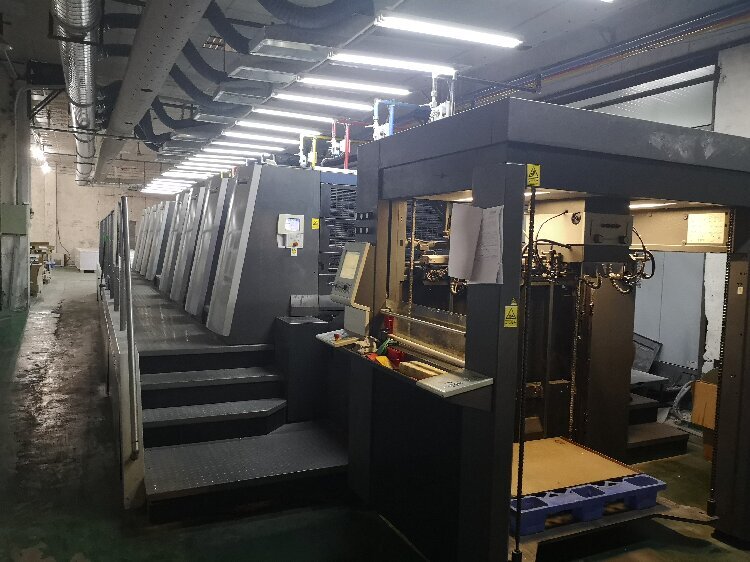In a world full of digital media, book printing remains a special and respected craft. Even with e-books and online reads, printed books still hold a unique place in our hearts. The feel of a real book, the smell of fresh ink, and the sound of turning pages are experiences digital formats can’t match. Modern printing factories blend new technology with skilled work to make beautiful books.

The Evolution of Printing Technology
Book printing has come a long way since Gutenberg's time. Today, factories use advanced machines for precise, efficient, and high-quality printing. Both offset and digital printing methods are used to meet different needs.
Offset Printing: This traditional method is key in the printing industry. It transfers ink from a plate to a rubber blanket, then to paper. Great for large runs, it offers consistent quality and cost savings. It’s perfect for books with detailed graphics and bright colors.
Digital Printing: This newer method prints digital images directly onto paper. Ideal for small runs, on-demand printing, and personalized content. It’s quick, reduces waste, and is eco-friendly.
The Printing Process: From Manuscript to Finished Book
A book's journey in a factory involves many steps. Each step is vital in turning a manuscript into a bound book.
Pre-Press: This stage prepares digital files for printing. It includes formatting the manuscript, designing the layout, and optimizing images and text. Proofs are made for authors and publishers to review. Once approved, files are set for digital printing or offset printing.
Printing: Here, files are printed on paper using offset or digital methods. Modern presses can handle various paper types and sizes, allowing for different book formats. Printed sheets are checked for quality to ensure colors and text are perfect.
Binding: Printed pages are assembled and bound. Methods include perfect binding, saddle stitching, hardcover binding and so on. Perfect binding glues the pages at the spine. Saddle stitching uses staples along the fold. Hardcover adds a durable cover, often with special features like dust jackets.
Finishing: Final touches enhance the book’s look and durability. This includes trimming edges, adding protective coatings, and special effects like foil stamping. Finished books are then packed and ready for shipping.
Quality Control and Sustainability
High-quality control is essential in printing. Each stage involves careful checks to ensure the final product meets all standards. Modern factories use advanced systems, including automated checks and color management tools, for consistent results.
Sustainability is also important. More factories are adopting green practices to reduce their environmental impact. This includes using recycled paper, vegetable-based inks, and energy-efficient machines. Digital printing cuts waste by allowing precise runs and less excess stock.
Certifications and standards: Many factories seek certifications like FSC (Forest Stewardship Council) and PEFC (Programme for the Endorsement of Forest Certification) to ensure responsible sourcing. These standards protect the environment and appeal to eco-conscious consumers and businesses.
Innovations in Printing Materials and Techniques
Modern printing factories are always looking for new materials and techniques. For example, biodegradable inks made from natural materials are becoming more popular. These inks are not only better for the environment but also offer vibrant colors and durability.
Similarly, the use of recycled and sustainable paper options is on the rise. Publishers and consumers are both showing a preference for eco-friendly materials, which has pushed the industry towards greener solutions.
Hybrid printing: Another innovation is hybrid printing, which combines offset and digital printing methods. This allows factories to take advantage of the strengths of both techniques. For instance, a large run of a book can start with offset printing for the bulk, then switch to digital for personalized touches or smaller batches. This approach maximizes efficiency and flexibility.
Enhanced finishing techniques: Advanced finishing techniques are also gaining traction. For example, laser foil stamping can create intricate designs on book covers, adding a unique tactile element. Embossing and debossing create raised or recessed designs, adding a sophisticated touch to book covers. These finishing touches not only enhance the visual appeal of the books but also provide a richer sensory experience for readers.
The Role of Automation in Printing
Automation is playing an increasingly important role in modern printing factories. Automated systems can handle tasks such as pre-press file preparation, color calibration, and quality checks. This not only speeds up the printing process but also ensures consistent quality.
Automated binding and finishing machines can quickly and accurately assemble and finish books. They can reduce the risk of human error and increasing efficiency.
Print-on-demand services: Print-on-demand (POD) services are particularly popular. These services allow authors and publishers to print books only as needed, reducing waste and inventory costs.
POD is especially beneficial for self-published authors, small publishers, and niche markets. It allows for flexible print runs, quick turnaround times, and the ability to keep books in print without large upfront investments.
The Enduring Appeal of Printed Books
Despite the conveniences of digital media, printed books continue to hold a unique charm. They offer a tangible connection to stories, knowledge, and history.
For many readers, a printed book provides a sense of permanence and authenticity that digital formats lack. Collectors and bibliophiles appreciate the craftsmanship and artistry involved in book printing, from the quality of the paper to the elegance of the binding.
Printed books also have emotional and cultural significance. They can be treasured gifts, family heirlooms, or symbols of personal achievement. The experience of browsing a bookstore, discovering new titles, and building a personal library is something that digital media cannot replicate. Printed books create a lasting impression, often becoming cherished possessions.
Conclusion
Modern printing factories showcase the enduring appeal of printed books. Through a blend of advanced technology and skilled craftsmanship, these factories produce high-quality books that captivate readers and stand the test of time.
As the industry continues to innovate and embrace sustainable practices, the future of book printing remains promising. Whether it's a beautifully illustrated children's book, a scholarly work, or a gripping novel, printed books continue to inspire and delight readers around the world.

